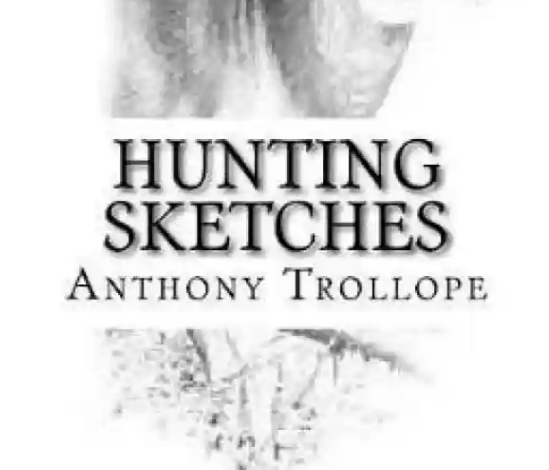How to Ride to Hounds
byHow to Ride to Hounds is not merely a tutorial but an invitation to understand a centuries-old ritual that fuses instinct, etiquette, and an unspoken bond with the land and the pack. This chapter begins with the acknowledgment that true mastery over fox-hunting cannot be taught like arithmetic—it must be absorbed through instinctive responsiveness and repeated exposure. Here, the rider is both student and participant in a carefully choreographed tradition, where personal impulses must be subdued in favor of the hounds’ leadership. The keyword serves as a thematic anchor throughout, reminding readers that this sport is not about dominating nature but aligning oneself with it, in tempo, in intention, and in restraint.
How to Ride to Hounds requires more than courage or speed; it demands humility and attentiveness, especially from the novice. Those new to the field often rush forward, eager to prove their mettle, yet that very eagerness undermines the essential rhythm of the hunt. Hounds must be trusted to do their work uninterrupted, for they alone hold the key to unlocking the chase. Moving ahead of them too early is not merely a breach of protocol—it risks erasing the very scent that connects hunter to quarry. The fox is not chased with noise and haste, but with silence and deference until the moment is right.
As the hunt prepares to begin, riders gather near the coverts—gorse patches, shaded woods, and deep forests—each a terrain with its own code. In gorse, visibility is low and silence is golden; the fox emerges only when the hounds’ noses confirm its presence, so stillness among riders is vital. In wooded settings, the pace is measured, and horses must be kept steady to avoid premature fatigue when the chase eventually breaks. Dense forests test the rider’s hearing rather than sight, forcing them to rely on barks and bugles rather than hoofbeats or visual cues to anticipate the next move. Each covert teaches a different kind of patience, a different form of respect for the hounds and the hunted.
Once the fox breaks, the true hunt begins—but even here, discipline must outweigh desire. A common mistake among newcomers is to follow the loudest gallop or the most confident rider, but this herd instinct often leads away from the action. True skill lies in riding smart, not hard—gauging wind direction, understanding the terrain, and watching the hounds more than the humans. Listening, too, becomes essential; a well-trained ear can pick up the nuances of the pack’s cries, revealing shifts in the chase that eyes may miss. It is in these moments that the sport transcends riding and becomes reading—reading the land, the animals, and one’s own limitations.
The success of the hunt is not measured only in the catch but in the harmony of movement and mutual purpose. A rider who finishes the day with horse and hound in sync has tasted the soul of fox-hunting, even if no fox was caught. Such an experience imprints itself on the memory: the rhythmic pounding of hooves, the short bursts of breath, the split-second decisions that made the difference between following and floundering. The trail may be muddy and cold, but the sense of belonging—to a tradition, a landscape, and a shared endeavor—warms the spirit.
Historically, fox-hunting was more than a pastime for the British gentry; it was a form of community cohesion and a proving ground for leadership and courage. Riders learned not only to handle their horses but to read signs in the environment, anticipate behavior, and work as part of a moving, thinking organism. In today’s terms, this translates into qualities of resilience, teamwork, and responsiveness—traits that still benefit those who study the hunt. The discipline learned in these fields extends beyond the chase, shaping riders into more thoughtful decision-makers, whether in the countryside or in urban life.
Modern hunting, where practiced, often abides by stricter ethical standards and legal frameworks, including drag hunting, where hounds follow an artificially laid scent. This alternative allows for the preservation of the sport’s structure without the ethical dilemma of pursuing a live fox. For learners, drag hunting offers a valuable training ground with clearer visibility and controlled pacing, making it easier to internalize the principles of movement, timing, and distance. Even here, the core lesson remains: mastery depends on observation, restraint, and deference to the hounds, whose instincts continue to guide the rhythm of the ride.
For those considering entry into the world of fox-hunting, it’s important to understand that success is not instantaneous. The first few rides may feel awkward or frustrating, especially when one’s role seems passive. Yet in watching, waiting, and riding behind the hounds, one begins to grasp the deeper beauty of the sport. It is less a race than a ritual, where every element—horse, rider, hound, and fox—plays a part in a performance whose outcome is uncertain but whose process is its own reward.
By embracing this philosophy, aspiring huntsmen and women find joy not only in the thrill of the gallop but in the quiet logic of the chase. They learn when to press forward and when to hold back, how to read the wind, and how to listen for the faintest signal from the field. And as experience deepens, the hunt ceases to be something done for sport and becomes something lived for insight. The fox may vanish, the trail may end, but the knowledge gained remains—etched in the mind, carried in the bones, and felt again with every hoofbeat on the morning frost.

